
All in a day’s work for the Aellig family
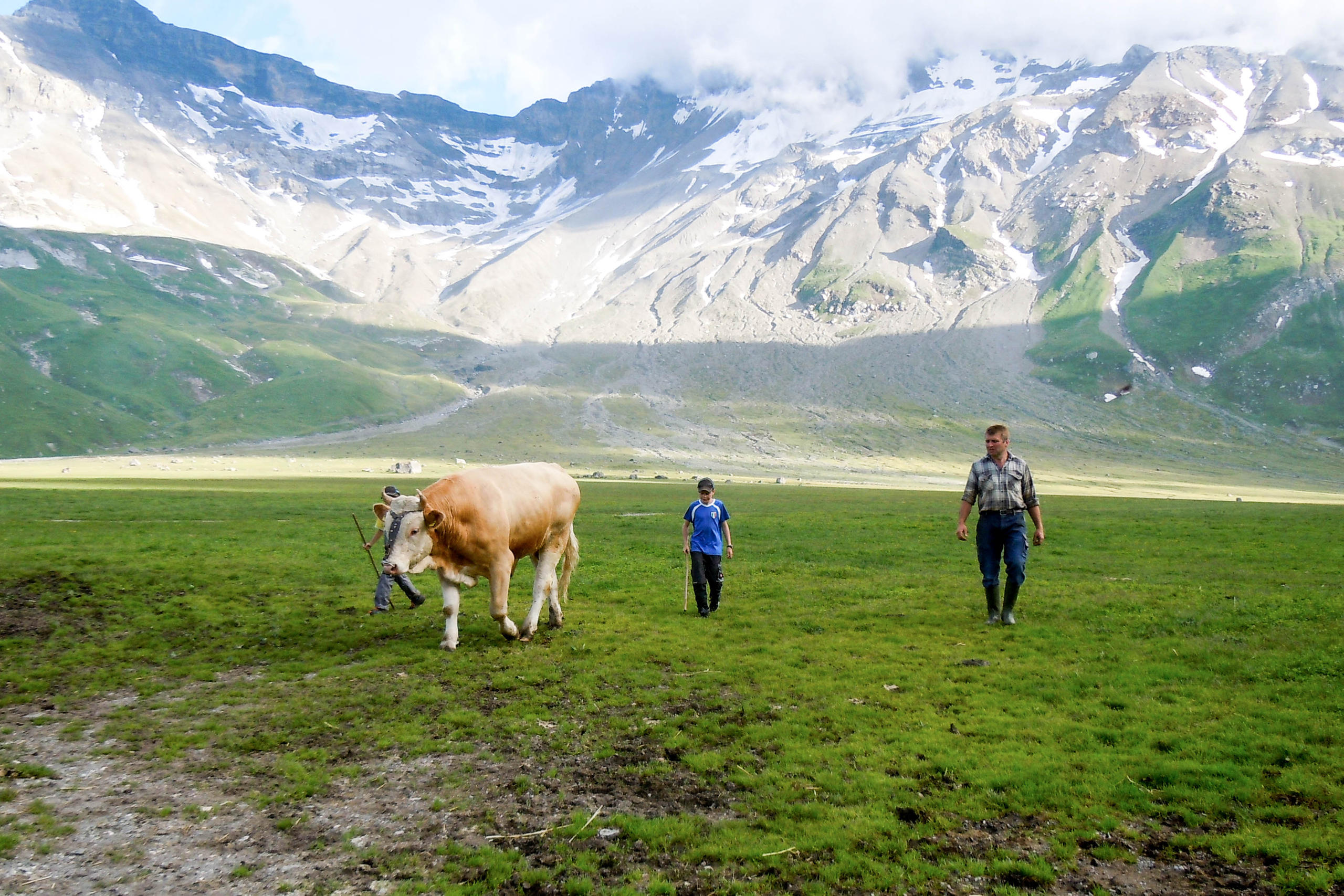
There’s nothing very romantic about it, though it has a charm all its own; the days are long and the work strenuous. Yet every summer, thousands of Swiss farmers trek up to the ‘Alp’ (the high pasture) with their herds.
Among them is the five-member Aellig family from Reichenbach in Kandertal. For about ten weeks of the year, they live on the Engstligen Alp in the Bernese Oberland. They do without hired hands, but this means the children all have to pitch in.
All day long, Sofia, Soldanelle, Salome, Flora and Furka, and another 500 cows (most of them with horns), have grazed on the high plateau 2,000 metres above sea level and accounted for large quantities of fresh grass and juicy plants. Now they are back in the Aellig family’s barn and are being milked.
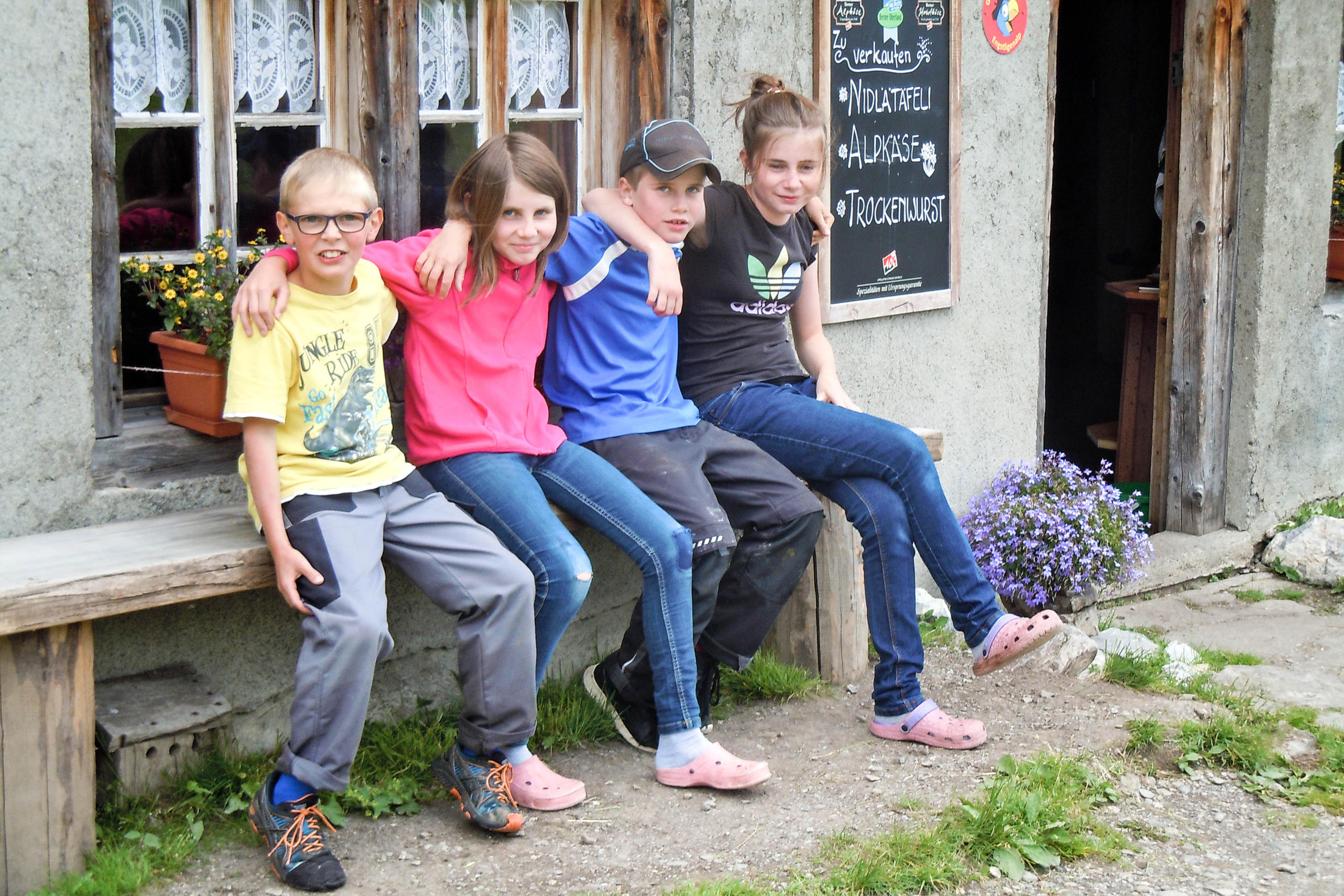
Fourteen-year-old daughter Martina gets to work. She buckles on the one-legged milking stool, massages the udders of the first cow, and then attaches her to the milking machine. Father and daughter are an efficient team. After one hour, the 21 cows are milked (11 are their own; 10 belong to an uncle). Each cow produces about 20 litres of milk a day. Apart from these dairy animals, the Aelligs have calves and beef cattle as well as a few pigs. There’s also Claudio, the only bull on the Engstligen Alp.
At the end of June, the Aelligs, together with other farmers and herdsmen with their animals, make the 600-metre climb along a steep rocky track to 700 hectares of grazing land. Pregnant cows and very young calves are sent up by cable-car, as there is no road.
The departure for the Alpine pastures attracts a crowd of onlookers from near and far. Not long ago, a South Korean TV crew turned up. Besides the herds of cattle, the view of the 3,244-metre-high Wildstrubel and other mountain peaks is spectacular.
The cheese-making chalet up on the Alp has been in the Aellig family for three generations.The pastures belong to the Alp cooperative, of which Abraham Aellig is chairman.
Even as a young boy, Aellig spent all his summers up here. He likes the Alp season, in spite of the long working days. “I look forward to going up on the Alp, but I’m also happy to go down again in the autumn,” he says.
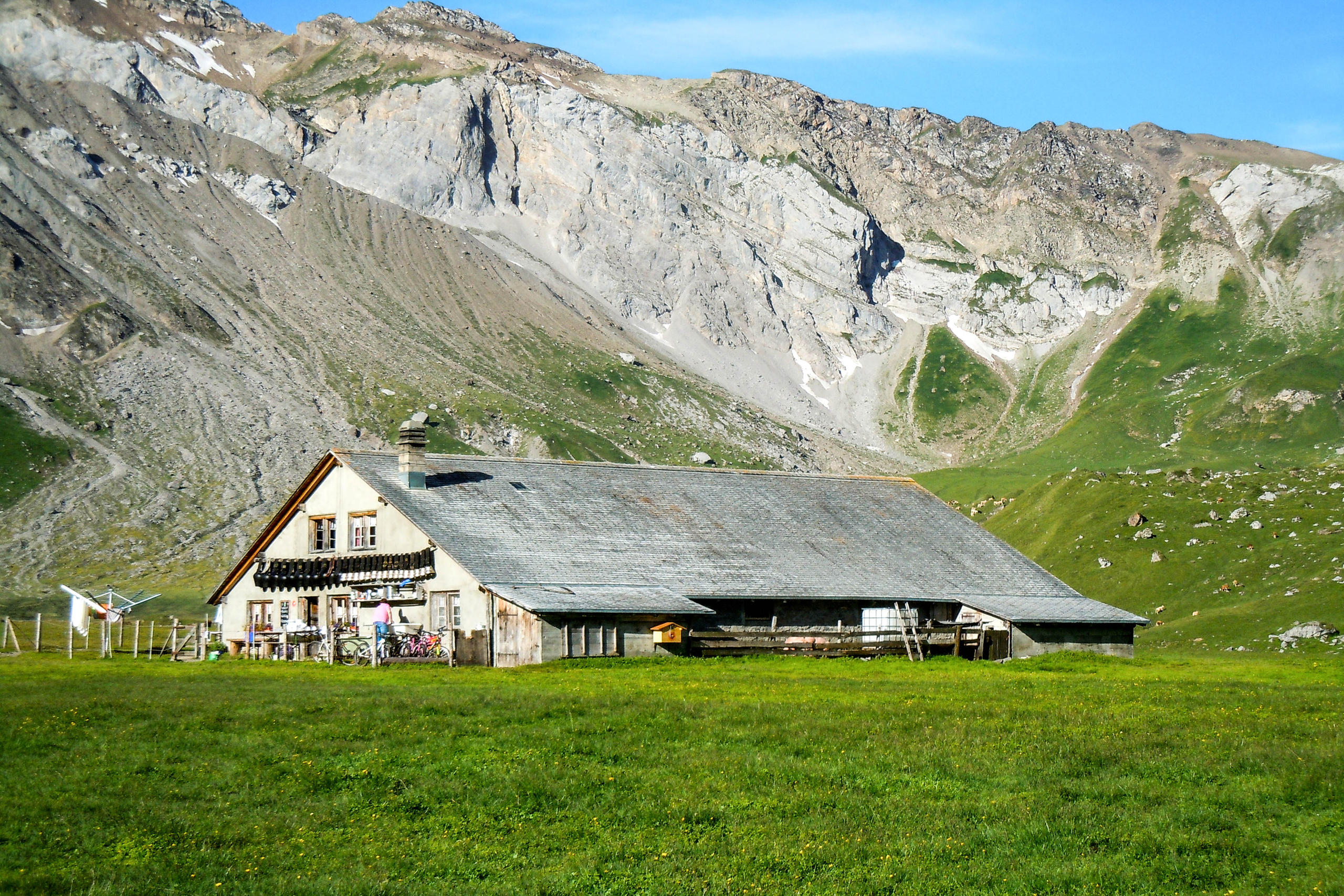
His wife Tanja, who used to be an office worker, enjoys the time spent on the Engstligen Alp too, but often she wishes she had a bit more to herself. “There is always something happening; tourists drop in, neighbours need something…down in the valley, life is more peaceful,” she says. It was particularly tough when the children were still small, or if they were sick.
“I was often at the end of my tether,” she adds.
Daily life on the Alp is certainly no picnic. It starts early at 5am with milking, herding the cattle out onto the pasture, feeding calves, spreading straw, taking manure out to the pasture, making cheese, bringing the cattle home, milking and cleaning out the barn. It’s usually not time to turn in before 9pm. The Aelligs also need to make hay on their own land down in the valley.
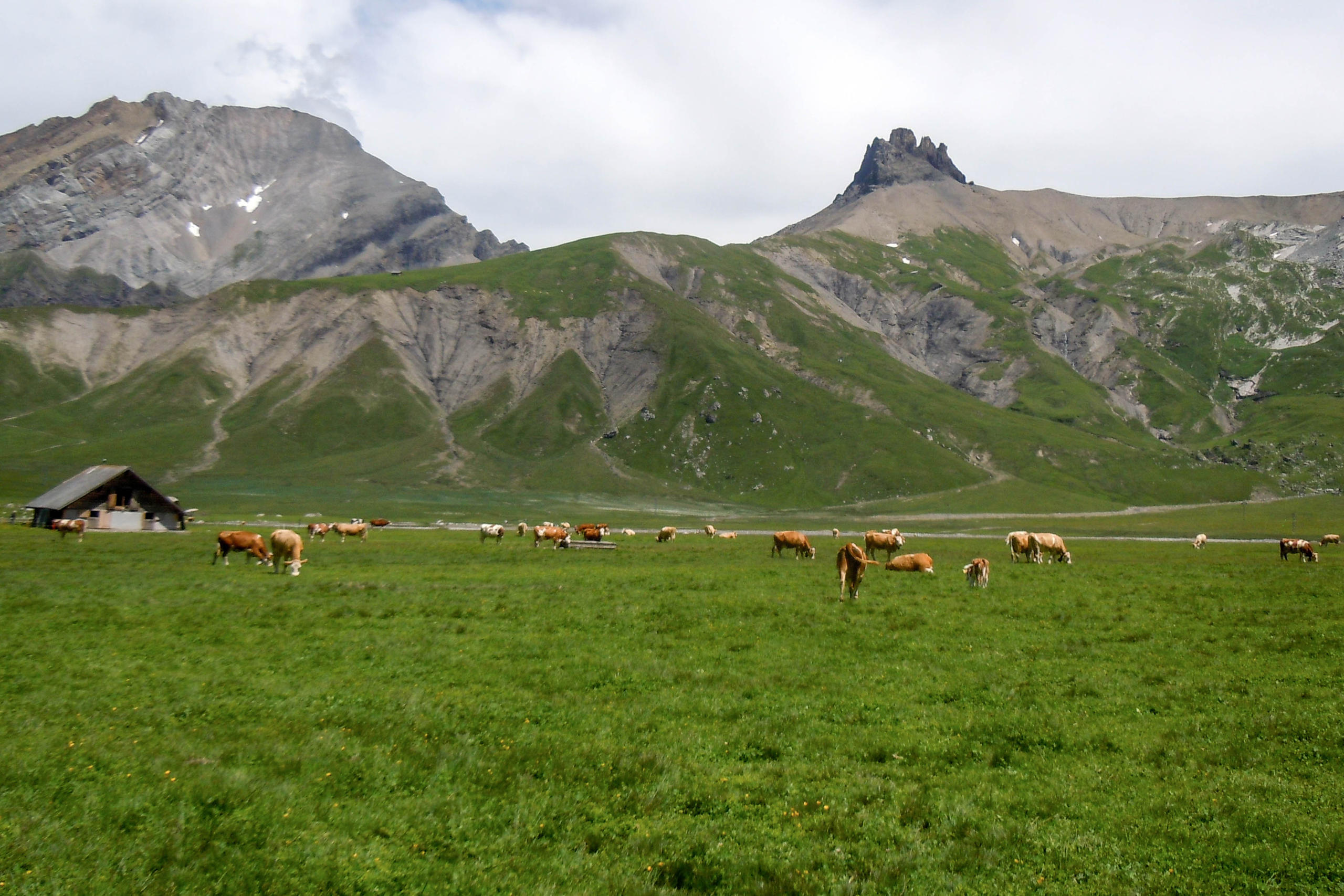
While around one-third of herdsmen and cheese-makers are generally recruited for alpine pastures from neighbouring countries due to a chronic shortage of hired hands, only two Germans work on the Engstligen Alp. Almost all the chalets on the Engstligen Alp are family-run. Often, it is the older generation who spend the summer on the Alp, while youngsters look after farms down in the valley. The Aelligs have to do both, as there are no grandparents still living. Without the children pitching in, it just wouldn’t work, as Abraham Aellig explains: “They are all really involved, and that way they learn to take responsibility for things.”
Today, as we saw, Martina is on cow-byre duty, whereas tomorrow it will be Ursina, 12, who is currently setting the table and playing with Hansueli the kitten. Ten-year-old Andrin has his chores, too. He likes animals most of all, and has two goats of his own, Camila and Lara. He shows a definite interest in farming, but today, he prefers to hang around with his school friend Reto, who like Andrin is a fan of Swiss traditional-style wrestling, and who is spending a holiday up here.
“They should all learn some trade or occupation, and we are not forcing any of them to be farmers,” says their father Abraham, who likes to go by the name “Ham”.
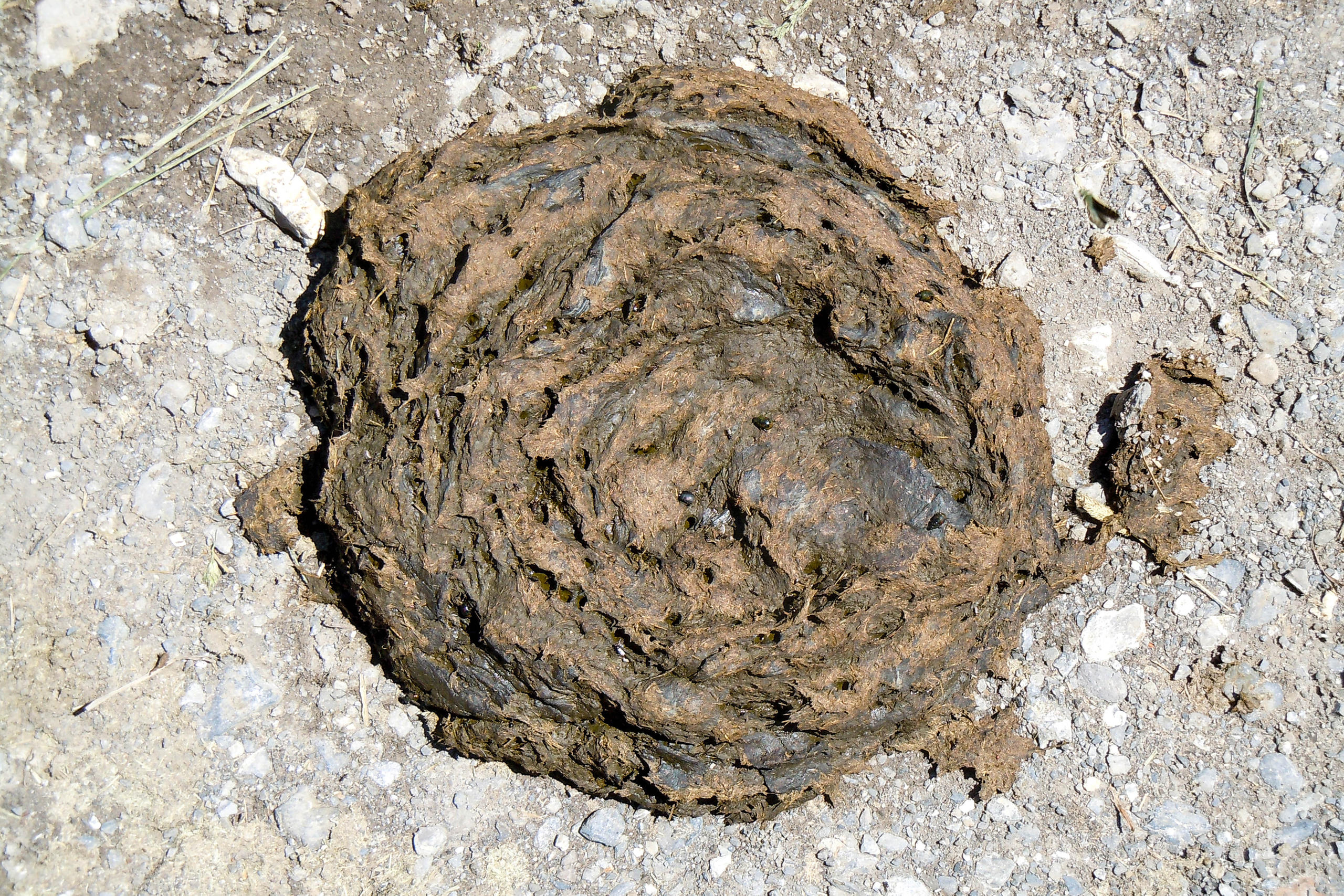
Teenaged daughter Martina would prefer to be with her friends down in the valley. “Then I could get a proper shower,” she says. The chalet belonging to the Aelligs has electric power, but no hot water, and washing and brushing teeth have to be done at the well next to the chalet.
As the time to turn in approaches, their neighbour, farmer Wäfler, stops by. One of his cows is “bullish” (in heat), he reports. Claudio the bull is needed. Abraham Aellig fetches him from the barn and takes him to the neighbour’s cow. After a few minutes, the business is concluded. “He did his job,” notes Aellig matter-of-factly.
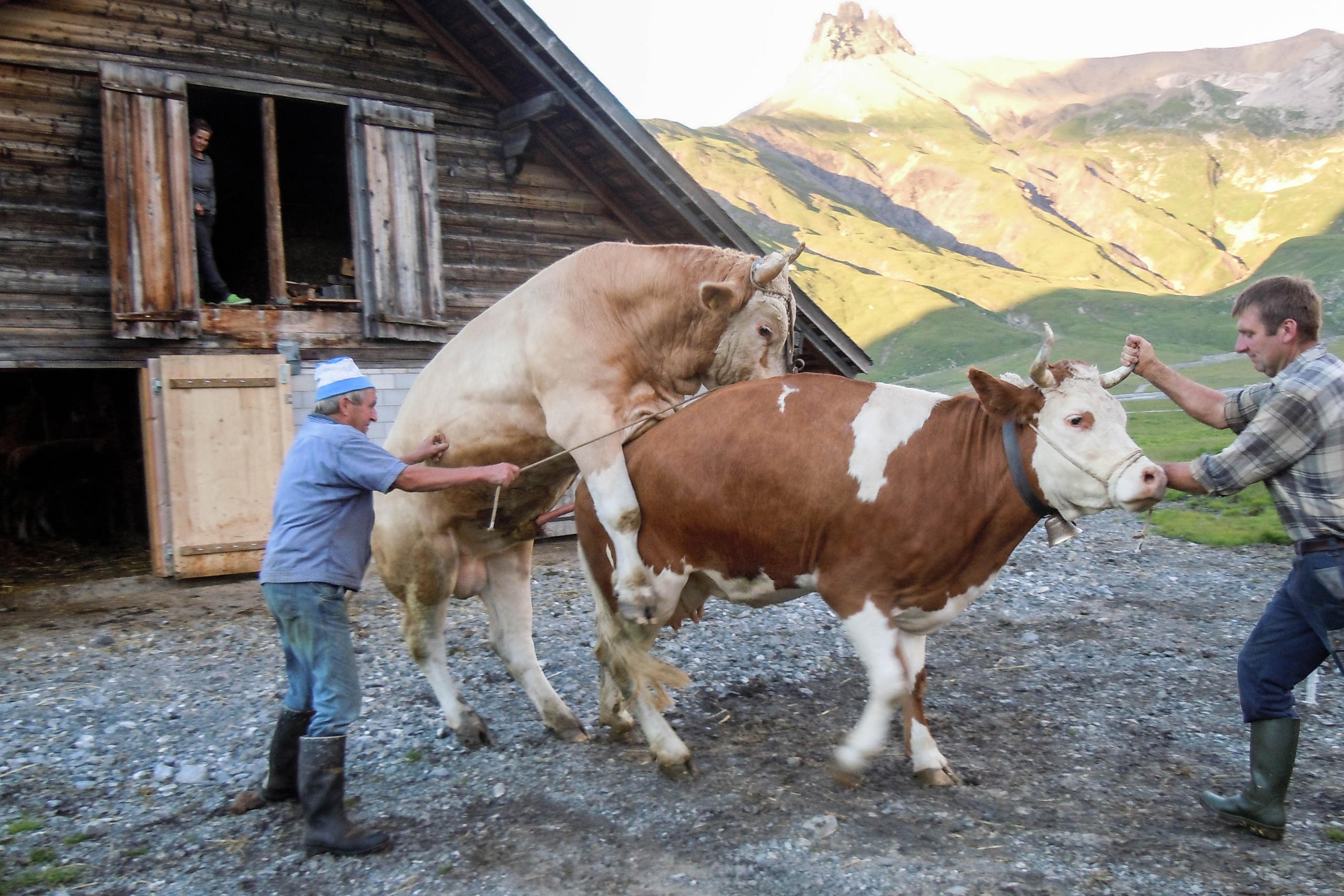
Now it is early morning. Abraham Aellig has just milked his Simmental cows, and now, it’s time for breakfast while the milk is being heated up in the cheese vat. About half of the milk is fed to the calves, and about 160 litres a day are made into cheese.
In the first few weeks on the Alp, Tanja Aellig makes raclette cheese and mutschli (semi-hard) cheese, then Alp cheese, which they sell right there. By the end of the season about 800kg of cheese have been produced.
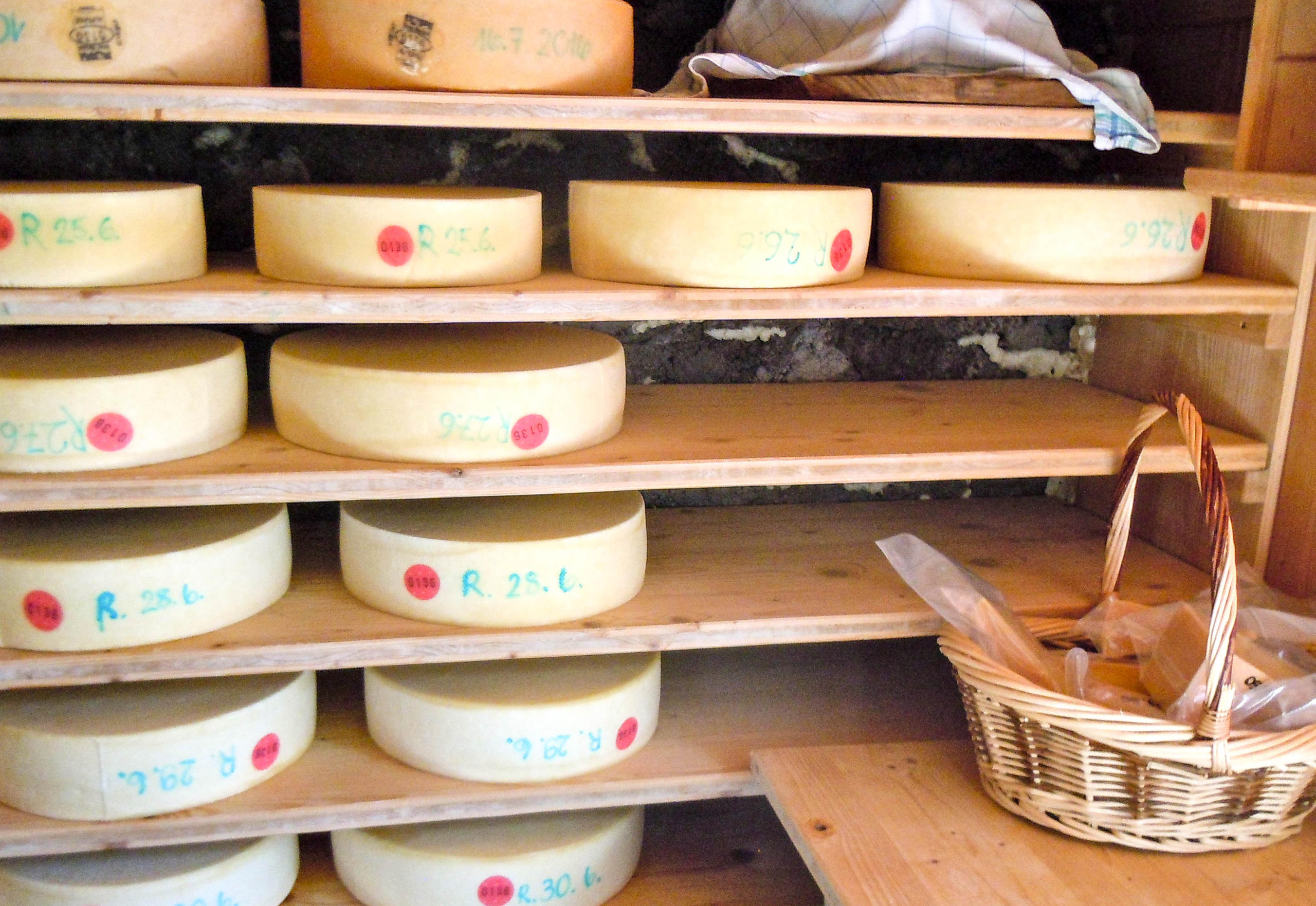
The regulations are quite strict: all utensils have to be kept carefully clean, and quantities of milk, temperature, pH values and other such data have to be noted down in a logbook. Beside the kitchen is the storage shed where the great rounds of cheese are brushed with brine and turned each day.
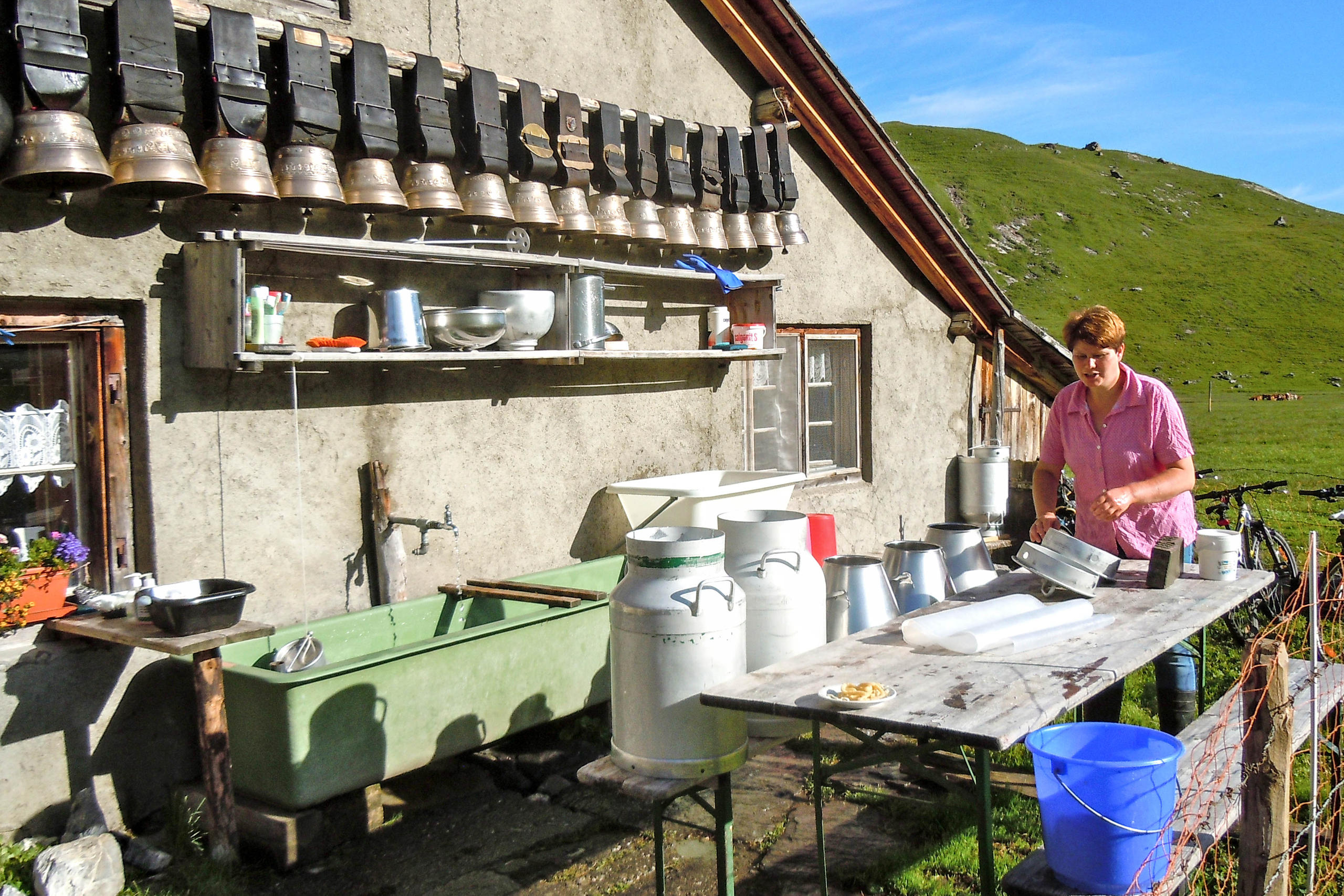
The main focus of work on the Alp is caring for animals and producing milk and cheese, but there is also pride in traditions. The fact that the federal government has been providing higher grazing subsidies per cow since 2014 may be an attraction.
But Tanja Aellig has her own take on this. “Again in Bern already they are talking about cutting subsidies for ‘short season’ Alps like the Engstligen. They should appreciate what we are doing: maintaining and caring for the countryside, which benefits the whole country. Without the herding folk on the Alp, after a few years the paths would be overgrown, the high plateau would be wild, and the tourists would stay away,” she points out.
Engstligen Alp cooperative
The Engstligen Alp, a designated nature reserve, is situated at an altitude of 1,950 metres in the Bernese Oberland. In all, 185 dairy cows, 128 other cattle, 194 calves, one bull and 18 goats spend about ten weeks in the summer on this high plateau. In the 13 chalets, mainly Alp cheese is produced and sold.
In the Bernese Oberland region of the Alps there are some 1,100 seasonal operations, half of them being Alp cheese producers. They have an annual output of about 1,200 tons of Alp cheese.
In 2016, the area provided grazing for 20,000 dairy cows, over 30,000 other cattle and calves, 20,000 sheep, 4,500 goats, 400 horses and even 450 alpacas and llamas.
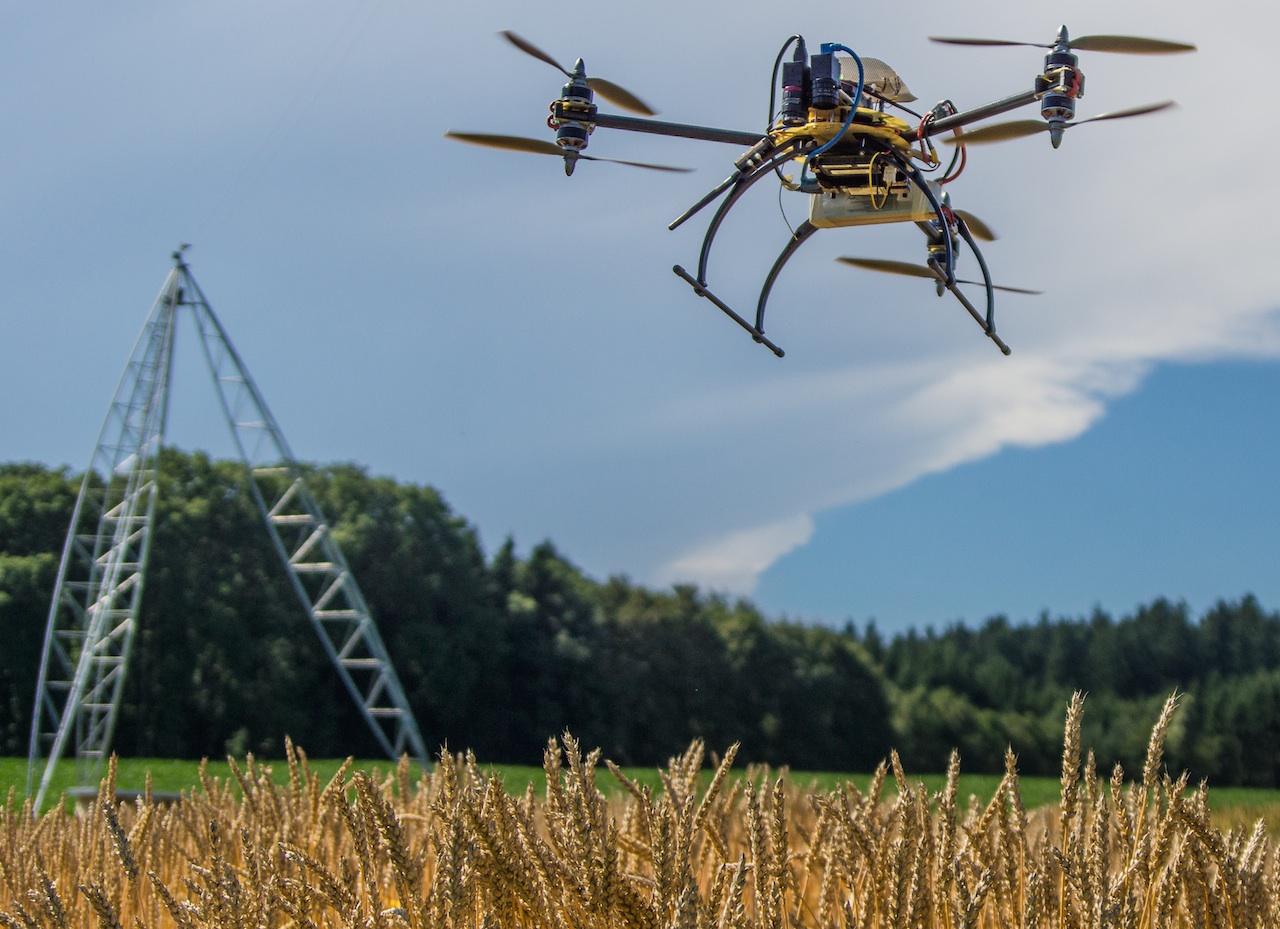
More
The rise of the machines: robots and the future of farming
Translated from German by Terence MacNamee

In compliance with the JTI standards
More: SWI swissinfo.ch certified by the Journalism Trust Initiative































You can find an overview of ongoing debates with our journalists here . Please join us!
If you want to start a conversation about a topic raised in this article or want to report factual errors, email us at english@swissinfo.ch.